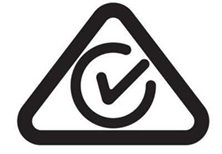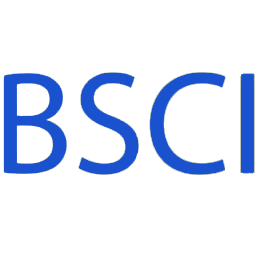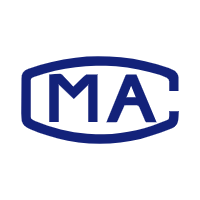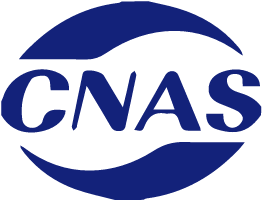
Certification introduction
RCM certification is a logo introduced by Australia and New Zealand to achieve a unified logo for electrical products. The logo is a trademark owned by the regulatory agencies of Australia and New Zealand, indicating that the product complies with both safety regulations and EMC requirements. It is not mandatory.
RCM certification and control electrical products are mainly divided into non-regulated and regulated products, because not all products marked with RCM need to be registered. Unregulated products do not need to be registered. Currently, only Level 3 electrical products are required to be registered. There are 56 major categories with high risk factors including power adapters and vacuum cleaners.
Under normal circumstances, the RCM logo should be marked on the product label. The agent number originally requested, the new RCM does not need to indicate the agent number.
Since this requirement was issued on March 1, 2013, there is a three-year transition period, which has been enforced on March 1, 2016, so manufacturers need to strictly perform the relevant tests of this standard in accordance with the requirements. Since the new RCM requirements are different from before, except that the importer will bear the high risk of unqualified product quality, plus the importer needs to pay the registration fee and the annual fee for registration, there will be very few companies that can provide this service.

RCM certification basic information
Nature of certification: voluntary certification
Whether factory inspection is required: No
Do you need a local representative: Yes
Certificate validity period: 2 years, 3 years, 5 years
Application cycle: one week after obtaining the safety certification and C-Tick / EMC report
Applicable area
Australia, New Zealand, Nauru, Fiji, Solomon Islands, Kiribati, Federated States of Micronesia, Tuvalu, Tonga, Marshall Islands, Vanu, Papua New Guinea, Samoa.
RCM certification content
RCM = Safety + EMC + Importer Declaration
1. Safety (product safety certification)
Product safety certification includes two parts: electrical products are divided into regulated electrical products (Prescribed Product) and non-regulated products (Non-prescribed product).
1). Controlled electrical products are classified according to AS / NZS4417.2, including electric heating equipment, refrigeration equipment, power tools, parts, etc. Among them, the three issuing units Queensland, New South Wales and Victoria are the most active in the certification process. Regulatory electrical appliances must obtain a Certificate of Approval issued by the monitoring department and require a logo (must be marked with a certificate number) . The first letter of the certificate number shows which state or region issued the certificate. Such as:
(1) Q04051 (Queensland Queensland) --- Q Number
(2) W2015 (Western Australia Western Australia) --- W Number
(3) V03101 (Victoria Victoria) --- ESV Certificate V Number
(4) NSW18099 (New South Wales) --- DOFT Certificate NSW Number
2). Non-regulated electrical appliances can be sold directly without certification, but the manufacturer must ensure that the electrical safety of the product complies with Australian standard AS / NZS3820: 1998 (Essential Safety Requirements for Low Voltage Electrical Equipment); the monitoring department will issue compliance for products that meet the standard Certificate (Certificate of Suitability). Electrical products that have obtained a certificate of conformity can be marked with a certificate number. The last letter of the certificate shows which state or region the certificate was issued from, such as:
(1) CS / 431 / Q (Queensland)
(2) CS / 108 / NSW (New South Wales)
2. EMC (Electromagnetic Compatibility)
Australia ’s electromagnetic compatibility compliance plan is based on the 1992 Radio Communications Act (Radio Communications ACT 1992). It covers a wide range of products, including electric motor driven and heat-generating electrical products, power tools and similar products, electric lamps and similar equipment, TV receivers and audio equipment, information technology products, industrial scientific and medical instruments, ignition engines and arc welding equipment, etc. The plan divides products into three categories according to the degree of danger of electromagnetic interference caused by the products, and the second and third products must be marked with C-Tick. But no matter which category the product belongs to, it must comply with the relevant EMC standards.
First-class products: products that have only a slight impact on devices that use wireless spectrum, such as manual switches, simple relays, brushless squirrel-cage induction motors, AC power / power transformers, and resistors. Such products can voluntarily apply for the use of the C-Tick logo during production and sales.
Second-class products: products that have a greater impact on devices that use wireless spectrum, such as microprocessors or digital devices with clocks, rectifiers or slip ring motors, arc welding equipment, switched power supplies, photometric regulators, and motors Telecommunications terminal equipment in the category of speed controllers and information technology (CISPR 22) (from November 7, 2003, the third category was changed to the second category).
Three types of products: products that have a serious impact on devices that use wireless spectrum, such as industrial, scientific, and medical instrumentation group 2 (CISPR11).
application process
1. The third-party laboratory evaluates the product and determines the test standards to be implemented;
2. If there is any non-compliance in the test, the laboratory will rectify the product to meet and meet the Australian standard requirements;
3. Pass the test and issue a test report;
4. Submit the test report to the Australian issuing agency for document review;
5. Australia passed the audit and issued RCM certificate;
6. Customers can complete the Australian website registration by themselves or by the laboratory;
SAA certification, C-Tick, A-Tick and RCM
SAA certification is for the control and safety regulations, C-Tick certification for EMC and radio products, and A-Tick certification for telecommunications products. The RCM mark is a certification mark launched in 2013. After the product has obtained the safety certification and electromagnetic compatibility registration, the RCM mark can be obtained through the safety certification regulatory body. From March 1, 2016, the electronic and electrical products sold must uniformly use the RCM logo; the A-tick and C-tick logos will be replaced. RCM can be understood as a registration system, including SAA and C-TICK.
Related application matters
(1) If the product has CB and national differences, you can directly transfer to Safety Certificate. Coupled with the EMC part, the agent can help the announcement. The product can be sold to Australia and labeled RCM Mark.
(2) Safety Certificate: When applying for the safety part, if the product is a direct plug in, you need to do AU Plug Test (Test Standard: AS / NZS 3112: 2004) for the product, if the product is Desktop, you do not need to do this test .
(3) EMCReport --- either C-Tick Report (TestStandard: AS / NZS CISPR 22: 2002) or CEEMC Report.
other
1. The RCM logo needs to be uniformly added to the product at the time. Note that this requirement was announced in Australia on April 19, 2013;
2. When the in-line adapter is RCM certified, a random test of the plug is required;
3. Lamp products: such as T8 LED lamps and fluorescent lamps, because users can directly replace them, the safety risk is greater, so you need to send samples to Australia for evaluation;
4. The time of different issuing agencies will be different.


BSCI certification is an abbreviation of BusinessSocialComplianceInitiative, and Chinese is called business social standard certification. BSCI is an organization that advocates the business community to abide by social responsibility. At the same time, it is a non-profit organization.

CMA, the name is \"China Metrology Accreditation\", the abbreviation of \"China Metrology Accreditation\" in English. According to the provisions of Article 22 of the Metrology Law of the People’s Republic of China: “The product quality inspection agency that provides notarized data to the society must be evaluated by the metrological administrative department of the people’s government at or above the provincial level for the capability and reliability of metrological verification and testing. Qualified.\"

Laboratory accreditation is a third-party certification that CNAS has the ability to perform specific testing and calibration work for testing and calibration laboratories.
RCM certification is a logo introduced by Australia and New Zealand to achieve a unified logo for electrical products. The logo is a trademark owned by the regulatory agencies of Australia and New Zealand, indicating that the product complies with both safety regulations and EMC requirements. It is not mandatory.
Get a quote